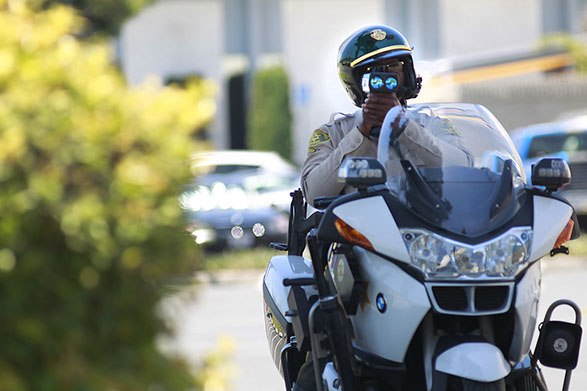Speeding Tickets in Allentown, Bethlehem & Easton
Pennsylvania police use a number of different methods to track vehicle speed and issue citations. These methods include Pacing, Aircraft Speed Detection, Manual Distance Timing (VASCAR), Laser and/or electronic Distance Timing (ENRADD) and Radar. Although, in Pennsylvania only the Pennsylvania State Police are permitted to use radar.
Each method of speed detection is subject to its own set of problems, errors and legal loopholes.
VASCAR (Visual Average Speed Computer and Recorder)
Despite the complicated sounding name, VASCAR is little more than a stopwatch that automatically calculates speed over distance when activated. To use VASCAR an officer must first measure some predetermined length of road and input that information into the VASCAR unit. This is called the “track” and the length from one end to the other is called the “track distance.” He must then find a location from which he can observe both the starting line of the “track” and the finish line of the “track.” Finally, he has to flip a switch when he observes you passing the the starting line and then he must flip another switch when he observes your crossing the finish line.
The astute amongst us will probably identify that there is substantial chance of error from both the measurement of the distance, which is usually done using the police cruiser odometer as well as from the reaction time required required to flip both switches. These are, indeed, sources of false tickets.
The error caused by inaccurate measurements of the track distance and the the officer’s inherent reaction time can be mitigated by the officer by increasing the track distance. However, any increase in track distance leads to third source source, parallax. While parallax is too complicated to explain here, what is essential to know is that the further the apart both ends of the track are, the more error generated by the officers inability to observe when the vehicle passes both ends of the track. As the ends of the track move further apart, the vehicle will appear to cross the start line later and the finish line sooner, thus giving inaccurately high speed readings.
ENRADD (Electronic Non-Radar Device)
ENRADD is a semi-mobile device that uses a laser to ascertain a vehicle’s speed. ENRADD is employed by local police departments but is very rarely used by State Police.
Like VASCAR, ENRADD uses the same calculation of distance over time. “Track Distance” and time are both utilized in the calculation and should be denoted on any speeding ticket. Unlike VASCAR, the ENRADD automatically tracks when a vehicle passes the start and finish line via the use of a laser.
The ENRADD consists of, essentially, four (4) posts, two (2) posts on each side of a road. The posts on the same side of the road will be setup 3 feet apart from each other and will mark the start and finish lines of the “track.” The posts on the other side of the road will likewise be setup 3 feet apart from each other and will mark the start and finish lines of the “track.”
A laser passes between each start post and tracks when the path of the laser is broken by a passing vehicle. Likewise, the finish posts have a laser passing between them and will record when a vehicle passes between through use one or the other the laser. The time between the break in both lasers is used to calculate the time it takes the vehicle to travel three (3) feet.
So, while ENRADD is superior to VASCAR in that it does not require manual clocking by an officer, it raises its own sets of problems. The ENRADD “track” is only 3 feet long and therefore errors or malfunctions are amplified because their consequences are not dispersed across a much longer distance as would be the case in a longer VASCAR track.
VASCAR & ENRADD Speeding Ticket Defense Attorneys.
The Traffic Lawyers at Spitale Vargo Madsen & Blair have defended against hundreds of speeding tickets throughout the Lehigh Valley. Contact our Easton Law Office now at (610)258-3757 to setup a consultation regarding beating your speeding ticket..


